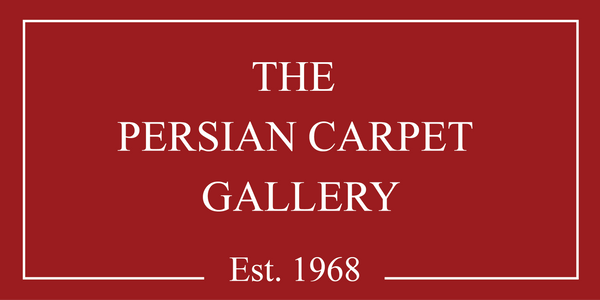Blogs
Silk Kilim: 17th-Century Persian Masterpiece at the Textile Museum, Washington, D.C.
The Silk Kilim at the Textile Museum, Washington, D.C., is a rare 17th-century Persian tapestry-woven rug from Kashan or Isfahan. Made with a silk warp and silk and gold/silver weft, it showcases exceptional craftsmanship with 112 warp threads per 10 cm. Its intricate design features a phoenix and dragon in combat, cranes in flight, and mythical kylins, alongside various animals in its borders. Similar pieces exist in Berlin's Islamisches Museum and the Metropolitan Museum of Art, New York. Textile expert M.S. Dimand attributes it to an Isfahan workshop, highlighting the rich Persian weaving heritage.
Floral Mashhad Carpet in Museo Poldi-Pezzoli, Milan
This exquisite late 16th-century Persian carpet, now housed in the Museo Poldi-Pezzoli in Milan, exemplifies the artistic excellence of the Safavid era. Originating from East Persia, it features a dense Persian knot count of 410,000 knots per square meter and a rich wool pile.
While Herat was historically considered the primary hub of carpet weaving in Khorasan, the sacred city of Mashhad also played a significant role. As a major pilgrimage center, Mashhad fostered a thriving carpet industry, supported by offerings made at its holy shrines.
The carpet's design is a breathtaking display of floral motifs, intricate arabesques, and stylized palmettes, arranged in an organic, asymmetrical pattern. These elements extend into the wide border, creating a sense of movement and depth. This masterpiece remains a testament to the enduring beauty and cultural significance of Persian weaving.
All-Over Animal and Floral Carpet: A Masterpiece of 16th-Century Persian Weaving
The All-Over Animal and Floral Carpet is a 16th-century Persian masterpiece, likely from Isfahan, and is now part of the Österreichisches Museum für angewandte Kunst (MAK) in Vienna. Measuring 185 x 120 cm, this fragment represents one-eighth of the original rug and remains well-preserved, apart from areas affected by dye mordants.
With an impressive knot density of 515,900 knots per square meter, the rug features a yellow silk warp, double weft of light brown silk, and a fine wool pile. Its intricate design showcases mythical and natural motifs, including a lion battling an ox, a leopard, a dragon, and a deer, set among palmettes and floral patterns. The three-band borderfeatures medallions, cloud bands, and arabesques, reflecting Safavid-era artistic excellence.
This carpet is a testament to Persian craftsmanship, embodying the rich artistic heritage of Safavid Persia, making it a treasured piece for collectors, historians, and art enthusiasts.
All-Over Animal and Floral Carpet at the Österreichisches Museum für angewandte Kunst, Vienna
This magnificent Persian carpet, crafted in Central Persia during the mid-16th century, is a highlight of the Österreichisches Museum für angewandte Kunst (MAK) in Vienna. Measuring 760 x 325 cm, it features an impressive knot density of 495,000 knots per square meter, woven with silk warp, silk weft, and wool pile.
The design is divided into four identical sections filled with elegant arabesques, cloud bands, and lush floral patterns. Among the intricate foliage, fierce confrontations between animals—lions, tigers, antelopes, and more—are vividly depicted, symbolizing nature’s beauty and chaos.
This carpet stands as a remarkable example of Persian craftsmanship, reflecting the artistic sophistication of the Safavid era and continuing to captivate art enthusiasts around the world.
Medallion and Animal Carpet
The Medallion and Animal Carpet, a masterpiece from 16th-century Tabriz in Northwest Persia, reflects the Iranian concept of Paradise. Housed in the Musée des Arts Décoratifs in Paris, this fragment features a lush garden landscape with blossoming trees, flowing streams, and diverse animals, symbolizing harmony and abundance. Made with Persian knots, yellow silk warp, silk weft, and a wool pile, it exemplifies the refined craftsmanship of the Safavid era. The other half of this rug is preserved in Cracow, Poland, while a larger, more intricate example exists in the Los Angeles County Museum of Art. These rugs are cultural artifacts that celebrate Persian artistry and spiritual symbolism.
Medallion and Arabesque Carpet
This Persian medallion carpet, attributed to Tabriz in the 17th century, is a masterpiece of craftsmanship housed in the Metropolitan Museum of Art, New York. Measuring 802 x 412 cm, it features a dense knotting of 620,000 knots per square meter, with a cotton warp, silk weft, and wool pile.
The central design showcases a circular medallion flanked by cartouches and arabesques, surrounded by slender, flower-adorned branches. Stylized red tulip-like flowers, "cloud-band" motifs (tchi), and vibrant peacocks add life and color to the field. The triple-bordered frame includes spiraling branches and stylized flowers, combining elegance and intricate detail.
A gift from the Kress Foundation, this carpet is a stunning example of Persian artistry, celebrated for its extraordinary beauty and technical mastery.
The Persian Carpet: Up to 1800
The Art of Dyes in Persian Carpets
The vibrant hues of Persian carpets showcase the skill and artistry of Iranian artisans. Known for their mastery in blending and harmonizing colors, they create rich, warm, and sophisticated shades that endure through time. For centuries, the dyes used were sourced exclusively from nature, including plants and animals. In some traditional villages, this age-old practice continues, preserving the legacy of natural dyeing.
Materials Used in Persian Carpets
The extraordinary quality of Persian carpets begins with the fine, supple fleece of Persian sheep, famously known as "oily sheep" due to their fatty skin. This unique wool, prized for its exceptional strength and durability, is primarily used for the pile of the carpet and occasionally for the warp and weft. The pile is typically crafted from two single threads twisted together to create a strong two-strand structure, ensuring longevity and resilience.
The Significance of Carpets in Iranian Culture
The traditional Iranian home, often minimalist in terms of furniture, underscores the central role of carpets in both daily life and artistic expression. Iranians showcase their deep appreciation for intricate design through ceramics, metalwork, and especially textiles. Among these, the rug stands as the most esteemed, functional, and comfortable element.











